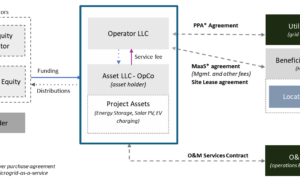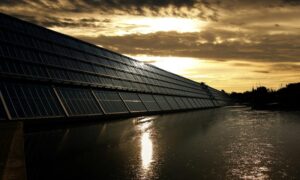Welcome to a world where harnessing the power of nature is not just an option, but a necessity. With climate change becoming increasingly urgent, it’s time for us to embrace sustainable solutions that will shape our future. In this blog post, we’re diving deep into the realm of renewable energy sources—those magical forces that promise endless possibilities and limitless potential. From wind and solar power to hydropower, geothermal energy, and biomass, each form brings its own unique strengths to the table.
Introduction
Renewable energy sources are those that naturally regenerate or are capable of being regenerated, such as solar, wind, wave, and tidal power. Renewable energy has the ability to replace fossil fuels, one of the leading contributors to climate change and air pollution. Solar is the most visible form of renewable energy, but it is not the only one. Wind, wave, and tidal power are also viable sources of renewable energy.
The most common way to generate renewable energy is through photovoltaic (PV) cells. PV cells use sunlight to create electricity from photons that have broken free from an electron in an atom. There are many different types of PV cells, but they all work in a similar way. When light hits a semiconductor material like silicon, some electrons are freed up, and these free electrons can flow through a good conductor like aluminum to produce electricity. The efficiency of PV cells varies depending on how much light gets absorbed by the cell and how much is reflected back out. The average efficiency of commercial-scale PV systems is around 15%. This means that for every 150 watts of sunlight hitting a PV panel, about 15 watts will be converted into electrical current. However, this figure drops drastically when a panel is facing direct sunlight because almost all the incoming light will be absorbed by the panel. In order to reduce this loss of efficiency, solar panels typically have several layers of metal oxide semiconductor (MOS) material, which reflect more sunlight back into the cell.
Renewable Energy Sources: Definition
Renewable energy sources are energy sources that can be regenerated or reused. The most common forms of renewable energy are solar, wind, and hydroelectric power. Renewable energy can come from a variety of sources, including natural resources like sunlight and wind as well as man-made resources like biomass and hydropower.
Renewable energy has been growing in popularity because it is environmentally friendly. It does not produce greenhouse gases, which are responsible for climate change. In addition, renewable energy is cost-effective when compared to other forms of electricity generation. Solar power is the cheapest form of renewable energy, followed by wind power.
Solar Energy
One of the most common forms of renewable energy is solar energy. Solar panels use the sun’s rays to convert energy into electricity. Solar panels can be used in a variety of ways, from powering a small appliance to generating electricity for your home or office. There are a number of different types of solar panels, so find one that best suits your needs.
Hydroelectricity
Hydroelectricity uses water flowing through turbines to turn blades that generate electricity. Hydroelectricity is relatively clean; it doesn’t produce emissions like traditional electric generators do. It’s also one of the least expensive forms of renewable energy available today.
Wind Energy
Wind energy is one of the most popular forms of renewable energy, and it is becoming more popular all the time. Wind turbines use wind to create electricity, which can be used to power homes or businesses. There are a number of different types of wind turbines, each with its own advantages and disadvantages. Here we’ll take a look at three of the most popular types:
The first type is the traditional wind turbine. This is the most common type of turbine, and it works by using wind to create electricity. Traditional wind turbines are large and bulky, but they produce a lot of power.
The second type is the small wind turbine. These turbines are smaller than traditional wind turbines, and they produce less power. They’re also easier to install, which makes them good for smaller areas.
The third type is the solar-panel wind turbine. This type of turbine uses solar panels to generate electricity. Solar panel wind turbines are more expensive than traditional or small wind turbines, but they produce more power.
Hydro Power
Renewable energy sources provide a sustainable, environmentally friendly alternative to traditional power generation methods such as oil and gas. Hydropower is one of the most sustainable forms of renewable energy because it does not use fossil fuels but rather relies on the flow of water to turn turbines.
There are a variety of hydroelectric projects in development around the world that can harness both large and small amounts of power. Some examples include the Grand Coulee Dam in Washington State and the Three Gorges Dam in China. These massive hydroelectric projects can produce significant amounts of electricity, but smaller hydroelectric projects can also be effective at providing clean, renewable energy.
Hydropower has several key advantages over traditional forms of renewable energy: it is reliable, produces minimal emissions, and is relatively easy to install. The primary downside to hydropower is that it is not scalable; that is, it cannot be used to generate large amounts of electricity quickly or efficiently. However, this limitation may become less important as more small-scale hydroelectric projects are developed around the world.
Geothermal Energy
Geothermal energy is an environmentally friendly source of renewable energy that can be harnessed to produce electricity and heat. The technology for geothermal energy does not rely on the sun or wind, and as a result, it is considered an “intermittent” renewable energy source. Geothermal energy can be used to power homes and businesses, and it has the potential to provide a reliable, sustainable form of energy.
One of the key benefits of geothermal energy is that it is emission-free. Geothermal power plants do not produce any greenhouse gases, making it an environmentally friendly option for powering buildings. Additionally, geothermal resources are abundant enough to meet the needs of most nations, making them a viable option for renewable energy sources.
There are several types of geothermal systems that can be used to generate electricity and heat: direct use (where water is heated directly before being sent back into the earth), indirect use (where water is heated indirectly before being sent back into the earth), combined cycle (where both direct and indirect uses are combined), and solar thermal (where sunlight is converted into heat).
The main challenges facing geothermal development are cost and the availability of resources. However, advances in technology are making geothermal power more affordable and accessible than ever before.
Conclusion
Now more than ever, it is important to explore all forms of renewable energy sources in order to create a sustainable future. Whether you are looking for ways to reduce your carbon footprint or simply want to find an environmentally friendly option, there are many different types of renewable energy that can help you achieve your goals. By understanding the key forms of renewable energy and using them wisely, we can all play a part in creating a brighter tomorrow.



































